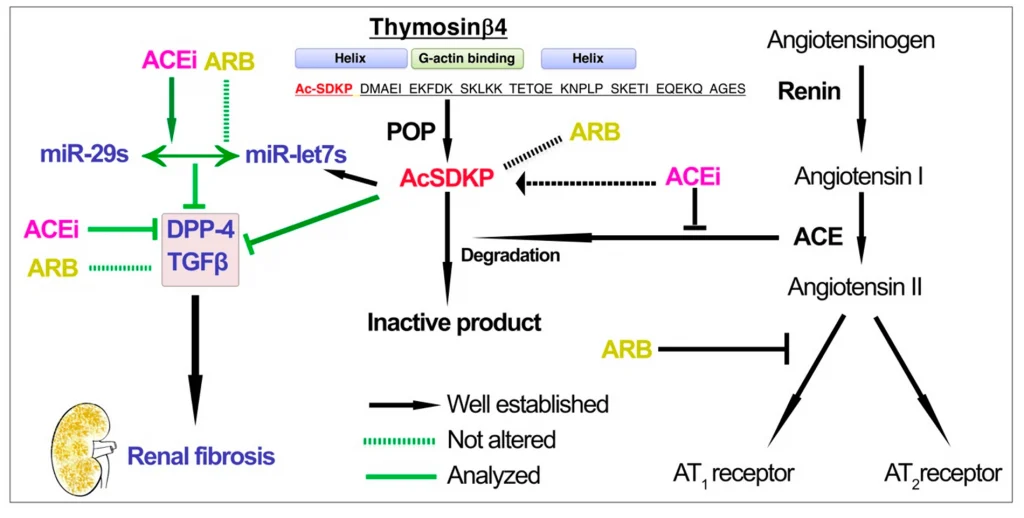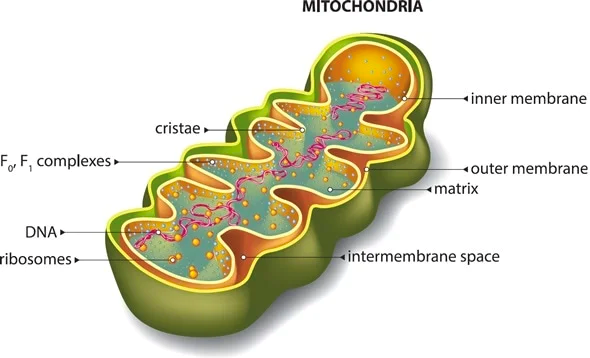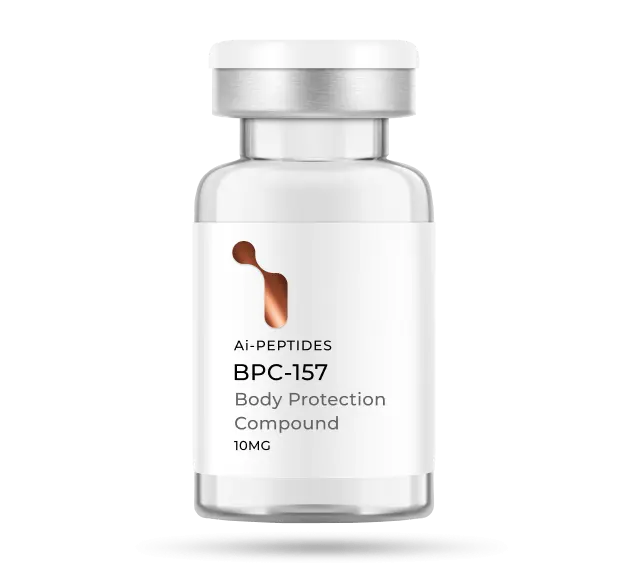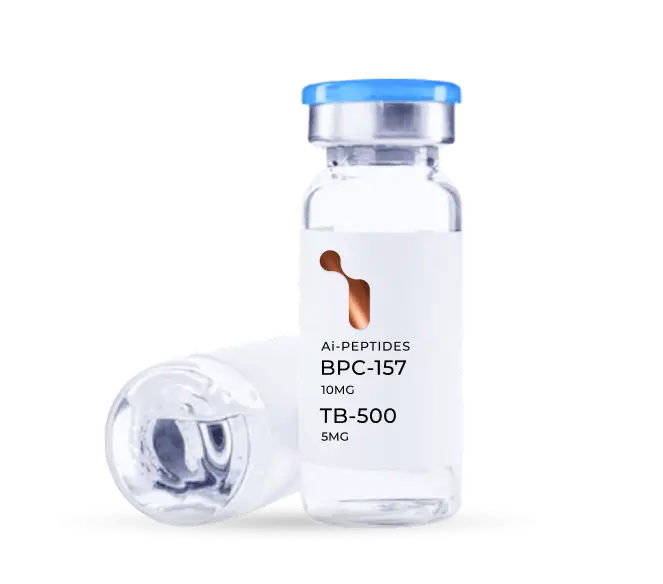Ac-SDKP is a Peptide Fragment of Thymosin Beta 4 (TB-500)
“Tβ4 is a naturally occurring peptide consisting of 43 base pairs of amino acids and generates the N-terminal tetrapeptide AcSDKP.” (14)
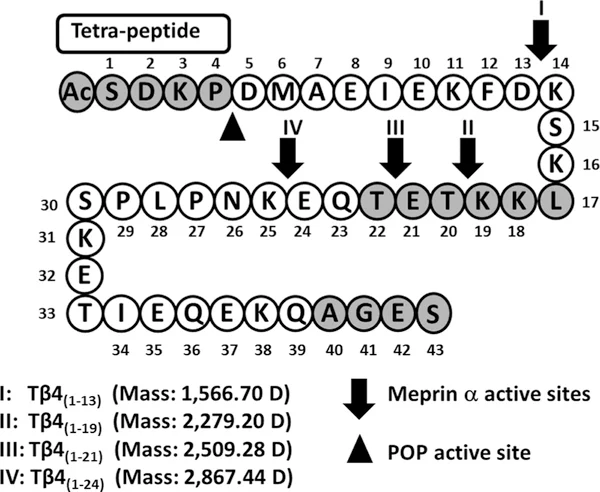
Peptide Ac-SDKP was isolated from the whole Thymosin Beta 4 Peptide Sequence.
Ac-SDKP Reduced Kidney Fibrosis.
“Treatment of cultured cells with ACEi alone or in combination with AcSDKP prevented the downregulated expression of miR-29s and miR-let-7s induced by TGFβ stimulation. Interestingly, ACEi also restored miR-29 and miR-let-7 family cross-talk in endothelial cells, an effect that is shared by AcSDKP suggesting that AcSDKP may be partially involved in the anti-mesenchymal action of ACEi. The results of the present study promise to advance our understanding of how ACEi regulates antifibrotic microRNAs crosstalk and DPP-4 associated-fibrogenic processes which is a critical event in the development of diabetic kidney disease.” (14)
